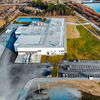Processing Your Payment
Please do not leave this page until complete. This can take a few moments.
- News
-
Editions
View Digital Editions
Biweekly Issues
- December 15, 2025
- December 1, 2025
- Nov. 17, 2025
- November 03, 2025
- October 20, 2025
- October 6, 2025
- + More
Special Editions
- Lists
- Viewpoints
-
Our Events
Event Info
Award Honorees
- Calendar
- Biz Marketplace
The wisdom embedded in industry standards goes beyond repairing your equipment
Advice Squad is written by members of the Maine chapter of the Association for Consulting Expertise, a trade organization of 88 consultants around the state. This issue's column is written by Paul Lenfest, owner of Engineering Reliability Resources, LLC in Smithfield.
Have you ever thought, "Someone must have run into this (insert technical issue) before"?
If you're involved in Maine industry, commerce, R&D, academia or entrepreneurial pursuits, use of proven best practices from recognized industry codes and standards can speed along technical problem-solving and mitigate risks associated with innovation and new technologies.
Whenever equipment fails, it's never the entire system or piece of machinery; all failures originate at one component. Even if it's not "defective," that part can fail because it was inadequately designed, specified, fabricated, assembled, installed or maintained. For this reason, sustainability in manufacturing, to cite one industry, depends on building in and maintaining reliability throughout the life cycle of every asset, starting at the component level.
Let's look at a few examples:
1. "They said it couldn't be done!"
A cracked weld on a 30-year-old, 1,000-ton hydraulic press critical to one company's production was found to extend beneath multiple layers of steel plate. Since it was undetectable using traditional non-destructive examination techniques like X-ray, we employed a newer technology that quantified the crack's length, location and time before ultimate failure if left unrepaired. The original equipment manufacturer said weld repair was not an option, but our business was not well positioned for a new replacement.
The ensuing repair effort consisted of a core team of individual "subject matter experts" not in press design, but rather in metals, welding, hydraulics, mechanical design and associated codes. Code references incorporated into the purchase specifications, although not mandatory, proved critical in multiple instances that threatened to compromise weld quality, structural redesign and schedule. After-the-fact warranties would never restore lost customers if the fix wasn't done right the first time. The successful repairs have lasted more than seven years now, saving over $2 million.
2. "Don't try this at home!"
Sparks from scrap metal contamination caused a wood dust explosion in an industrial 30-ton-per-hour pellet burning system. Fine pellet dust, especially in large volumes generated by this type of biomass system, is highly explosive in the right air concentration. After running 18 years without incident, some of the built-in safeguards (powerful magnets, metal detectors and sophisticated process controls) had failed. Restoring reliable operation required a comprehensive review and redesign of every mechanical and automation component, by a team of subject matter experts in dust explosions and industrial boiler combustion control systems that fired pulverized fuels. System-level experts did not exist because the pellet-firing equipment arrangement was one-of-a-kind. Improved process controls and hardware included significant technological advances that had been incorporated into relevant codes, mostly the National Fire Protection Association's, over the 18 years following the system's original design.
Shared knowledge
Industry codes and standards organizations have historically investigated equipment failures to determine the "root cause" at the component level. Lessons learned are incorporated into continuously updated codes and standards related to machinery design, construction, operation, maintenance and repair in a multitude of industries in order to prevent reoccurrences.
The benefits of applying best practices ingrained in the technical experience, knowledge and networking of reputable C&S organizations often go unrecognized. Their more familiar use is in the context of mandated regulations for specific industry applications. For example, the American Society of Mechanical Engineers published the Boiler and Pressure Vessel Code in 1915, which was later incorporated into laws throughout most of North America. Boilers and pressure vessels were innovations that advanced transportation and heavy industry in ways previously incomprehensible. However, that machinery was also fairly unforgiving; taking shortcuts in fabrication, maintenance and operation sometimes had disastrous consequences.
Maine long ago adopted and required compliance with both ASME for boiler construction and repair, and the National Fire Protection Association fire code. In addition to the societal benefits of increased equipment integrity, safety and reliability, we also stand to gain by:
- Sharing the information contained in trusted, unbiased technical C&S organizations to bolster innovation and remove silos. Stop reinventing wheels.
- Utilizing proven technological advances and best practices in C&S organizations for improved reliability, efficiency and maintainability of manufacturing products, processes and procedures
- Employing the global networking associated with recognized C&S organizations to support Maine's technological innovation efforts toward sustainable energy, environment and economies
Collaborative approaches, founded on a C&S knowledge base, can prove critical in business decisions to install new and greener technologies, or operate equipment reliably beyond its expected life.
Paul Lenfest can be reached at lenfestp2@asme.org. Read more Advice Squad here.
Mainebiz web partners

The Giving Guide
The Giving Guide helps nonprofits have the opportunity to showcase and differentiate their organizations so that businesses better understand how they can contribute to a nonprofit’s mission and work.
Learn More
Work for ME
Work for ME is a workforce development tool to help Maine’s employers target Maine’s emerging workforce. Work for ME highlights each industry, its impact on Maine’s economy, the jobs available to entry-level workers, the training and education needed to get a career started.
Learn More
Groundbreaking Maine
Whether you’re a developer, financer, architect, or industry enthusiast, Groundbreaking Maine is crafted to be your go-to source for valuable insights in Maine’s real estate and construction community.
Learn more-
The Giving Guide
The Giving Guide helps nonprofits have the opportunity to showcase and differentiate their organizations so that businesses better understand how they can contribute to a nonprofit’s mission and work.
-
Work for ME
Work for ME is a workforce development tool to help Maine’s employers target Maine’s emerging workforce. Work for ME highlights each industry, its impact on Maine’s economy, the jobs available to entry-level workers, the training and education needed to get a career started.
-
Groundbreaking Maine
Whether you’re a developer, financer, architect, or industry enthusiast, Groundbreaking Maine is crafted to be your go-to source for valuable insights in Maine’s real estate and construction community.
ABOUT
NEW ENGLAND BUSINESS MEDIA SITES
No articles left
Get access now
In order to use this feature, we need some information from you. You can also login or register for a free account.
By clicking submit you are agreeing to our cookie usage and Privacy Policy
Already have an account? Login
Already have an account? Login
Want to create an account? Register
Get access now
In order to use this feature, we need some information from you. You can also login or register for a free account.
By clicking submit you are agreeing to our cookie usage and Privacy Policy
Already have an account? Login
Already have an account? Login
Want to create an account? Register







Comments